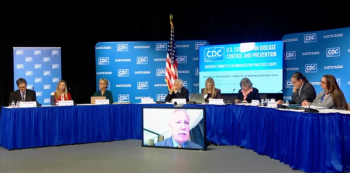
4 Million Deaths Caused Annually by Acute Respiratory Infections
Acute respiratory infections (ARIs), a disease group that includes pneumonia, influenza, and respiratory syncytial virus (RSV), are responsible for 4.25 million deaths each year, according to the first-ever Acute Respiratory Infections Atlas (ARIAtlas.org), published today by World Lung Foundation. ARIs are the third largest cause of mortality in the world and the top killer in low- and middle-income countries. Compared to the illness and mortality they cause, ARIs receive a fraction of government, donor agency, and philanthropic support.
"We know that at least four million people die from ARIs, yet the global health community does not even recognize them as a distinct disease group," says Peter Baldini, CEO of the World Lung Foundation. "The goal of the Acute Respiratory Infections Atlas is to demonstrate in vivid detail the scale of this problem and to kick-start a serious conversation about addressing it. With relatively modest resources, the means are available to save millions of lives. We simply need commitment, sound policy, and strategic investment."
Collectively, ARIs cause at least 6 percent of the worlds disability and death, according to the Atlas. These deaths occur overwhelmingly in the worlds poorest countries, where the drivers of ARIs, including malnutrition, pollution, overcrowding, and tobacco use are most prevalent. In countries such as Mali, Afghanistan, Sierra Leone, and Niger, the death rate from ARIs alone is ten times higher than the global median death rate from all causes.
The Atlas presents other arresting facts:
-- The death rate from pneumonia is 215 times higher in low-income countries than in high-income countries.
-- Every year, 3 million to 5 million people globally get severe flu infections and as many as 500,000 people die.
-- RSV is the most common source of severe respiratory illness in children, yet no vaccine is available and there is no established treatment.
-- Three million hospitalizations result from RSV, and mortality is seven times higher in the developing world.
-- ARIs take a heavier toll on vulnerable populations, such as those infected with HIV.
ARIs are the leading cause of illness and death in children worldwide, according to the Atlas. Malnutrition in utero, during infancy, and in early childhood is a major culprit. The impaired development of a fully functioning immune system makes young children particularly susceptible to ARIs:
-- 20 percent to 40 percent of all child hospitalizations can be traced to ARIs.
-- Pneumonia alone accounts for 20percent of all paediatric deaths around the world1.6 million in 2008; by contrast, 732,000 children die from malaria and 200,000 from HIV/AIDS each year.
-- RSV kills at least 66,000 children annually and perhaps as many as 199,000.
According to the Atlas, only about 1 percent (US $32 million) of all pharmaceutical research and development funding was spent on research and development for ARIs in 2007, compared with US $1.1 billion spent on HIV-related research, yet ARIs take twice the toll in lives lost.
Strategies for reducing ARIs are within reach. Some are low-cost and can be implemented immediately; others require longer-term efforts. Among the strategies described in the Atlas:
-- Distribute effective nutritional supplements
-- Expand vaccination programs
-- Disseminate public awareness campaigns
-- Reduce tobacco use
-- Address the shortfall of 4.25 million healthcare workers needed to help vulnerable populations
-- Improve access to lab testing and inexpensive diagnostic tests
-- Find more efficient ways to manufacture vaccines and strengthen distribution
-- Introduce safer cooking and heating alternatives.
The Acute Respiratory Infections Atlas comes with a companion website, ARIAtlas.org, where visitors can view and sort ARI data specific to their country or region. Users can also create custom fact sheets, download charts and graphs, and participate in online ARI discussions.
Newsletter
Stay prepared and protected with Infection Control Today's newsletter, delivering essential updates, best practices, and expert insights for infection preventionists.






